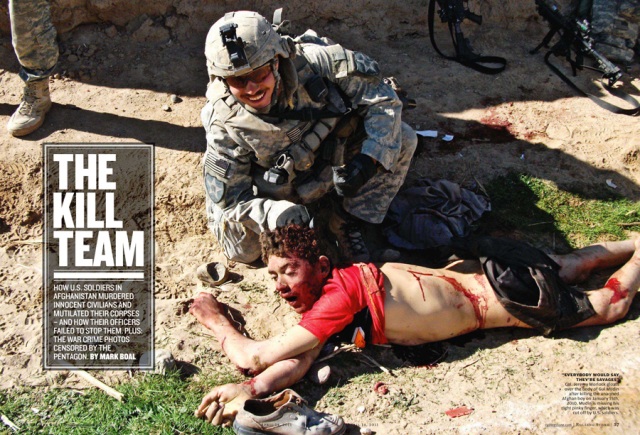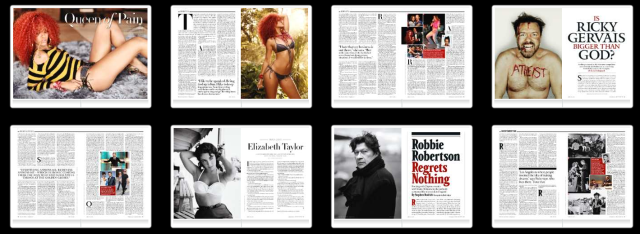It was last July when Rolling Stone shook up US diplomacy with a stirring immersion into the ranks of then Gen. Stanley McChrystal with “The Runaway General.” It seems as though Rolling Stone gets into the habit of releasing a stunning, disruptive and often horrific look at US politics in a major long form journalism piece once every six months or so, which is fine by me as a thorough fan of long-form journalism.
“The Kill Team” is the latest of this series, and strangely enough the last place I read it was on Zinio. It was released as an article online a few days before the official press date, where my first instinct was to read the entire expose. And reading it was on par with reading up on Abu Ghraib during the Iraq war; chilling and numbing all at once. But then a funny thing happened. (Not “Ha ha” funny.)
Zinio has been moving offices and I forgot about the article and the impending release, as my goal was to write about it as soon as the issue was available on our newsstand. Obviously, I forgot about this last week. And, as luck would have it a friend had the print edition lying around this weekend and I opened it up to this:
There’s a historical cliché associated with shock value, but I find those more to be aptly associated with art. With the crimes described in “The Kill Team”, it seemed much more fitting to see this spread first, than the small portrait of two smiling soldiers that greet you on Rolling Stone’s site. This is no fault of Rolling Stone; there are limits to web design and layout within major, content management oriented websites. But it certainly shines a light on why, when it comes down to it, the layout of the magazine does much more for the story than the layout of the website.
All magazines have layouts; a standard grid structure that is used to place all the photos, advertisements, copy, graphics, illustrations, page information and extras accumulated along the way. Looking at this issue of Rolling Stone in Zinio’s online reader, I took this screenshot and hopefully you’ll be able to tell the grid structure being used. (It’s easier if you squint a bit.)
(You can sort of see the primary 3-column grid, and the secondary use of two columns for some first page story introductions.)
And my point is this: When you go to read “The Kill Team” online, as I did when the story broke, the words were piercing and the story was engrossing and disturbing and my attention was kept due to all of the factors that make great writing. However, when I picked up the magazine this weekend from lying on the floor and opened up to this story, it was so much more enthralling. The photographs immediately made me simultaneously want to put down the magazine as well as keep reading. It was obviously carefully put together to accompany a narrative in specific way that often times the web can’t do.
“The Kill Team” online looks, with a few upgrades here and there, just like Rolling Stone’s coverage of Bright Eyes at SXSW (or, really, any other feature). This is a common problem across websites that deal in news: all articles must be presented, with a few bends here and there, within a very strict set of parameters as technology dictates. So a shocking and incredibly important story about war and atrocity ends up getting relatively the same visual treatment as a concert review. I’ve seen, over at The Huffington Post, giant headlines about terrible oil spills one day and equally giant headlines about Britney Spears.
These visual equivalences are evolving online, as they should, because not all information is equal and it certainly shouldn’t look it. Though the sentiment of “Print Is Dead” has been around since even before David Carson proclaimed it, it should not be forgotten that print is one of the oldest industries of the human race, and it’s another reason why I’m glad there’s a company like Zinio, preserving these important elements and bringing them into the new and undiscovered territory of touch screens and tablet devices. It’s not that design is as important as an article like “The Kill Team,” but rather that it’s design that will allow the article to be absorbed as fully as possible by consumers in a way intended by the team at RS.




Pingback: Under The Radar | ziniophile